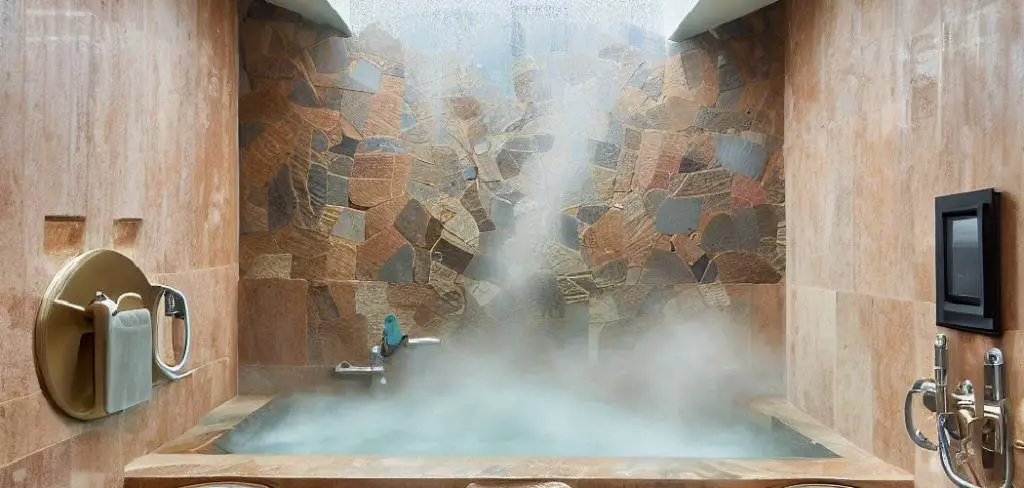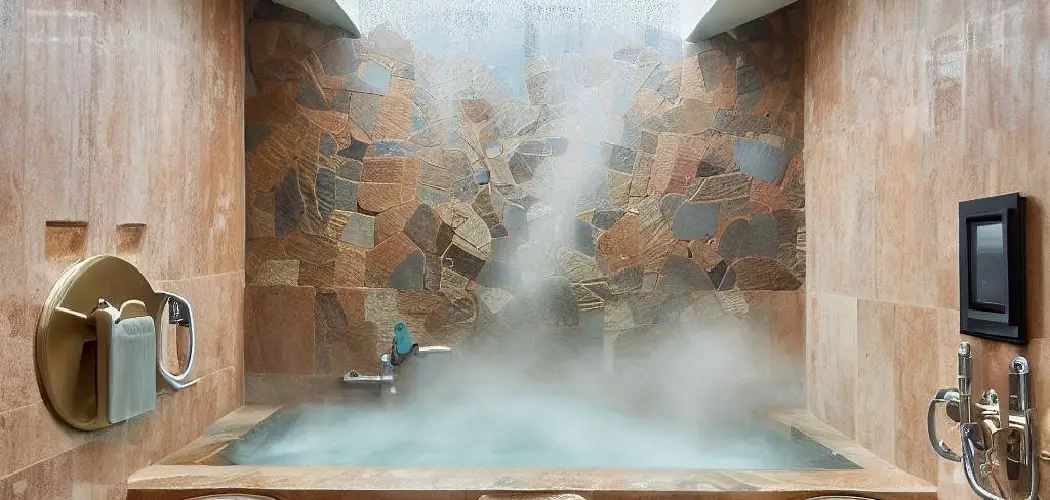Keeping a bathroom warm and comfortable can be challenging, especially during the colder months, and relying on electric heaters is not always an option. Whether due to power outages, an off-grid lifestyle, or simply a desire to reduce electrical consumption, finding alternative methods to heat a bathroom is essential.

This guide on how to heat a bathroom without electricity aims to explore various techniques that utilize non-electric sources, ensuring your bathroom remains a cozy retreat regardless of your circumstances. From insulating methods to clever hacks using everyday items, there are multiple strategies to maintain warmth without relying on electricity.
Why is It Important to Keep a Bathroom Warm?
Before delving into alternative heating methods, it is important to understand why keeping a bathroom warm is essential. Firstly, the bathroom is typically the coldest room in the house due to its smaller size and lack of insulation. Not only can this make using the bathroom uncomfortable, but it can also lead to issues such as frozen pipes and mold growth.
Additionally, a warm bathroom is crucial for personal comfort and hygiene. Cold temperatures can make using the toilet or taking a shower unpleasant, especially for children and elderly individuals. It can also increase the risk of illnesses such as respiratory infections.
Needed Materials
To effectively heat a bathroom without electricity, you will need the following materials:
- Insulation Materials Such as Foam Boards, Fiberglass, or Spray Foam
- Weatherstripping for Doors and Windows
- Heavy Curtains or Blankets
- Space Heaters (Non-electric Options)
- Radiant Heat Sources Such as Heated Flooring or Heated Towel Racks
- Small Propane or Kerosene Heaters
- Hot Water Bottles or Heating Pads
- Candles and Candle Holders
8 Step-by-step Guidelines on How to Heat a Bathroom Without Electricity
Step 1: Begin by Insulating Your Bathroom
The first step in heating a bathroom without electricity is to ensure it is properly insulated. Start by assessing the insulation in your bathroom, particularly around windows, doors, and any exterior walls. Use insulation materials such as foam boards, fiberglass, or spray foam to fill in any gaps or cavities where heat might escape.
Additionally, weatherstripping should be applied around the edges of doors and windows to prevent drafts. Consider using heavy curtains or blankets over windows, as they can add an extra layer of insulation, further trapping heat inside. Proper insulation reduces heat loss, making your bathroom retain warmth more effectively and enhancing the efficiency of other non-electric heating methods.

Step 2: Utilize Space Heaters
Once insulation issues have been addressed, incorporating non-electric space heaters is an effective method to warm your bathroom. Choose from options such as propane or kerosene heaters; both are excellent choices that do not require electricity. Ensure that the space heater is of an appropriate size for your bathroom to maximize its heating potential.
When using these types of heaters, safety must be a top priority: follow the manufacturer’s instructions carefully and ensure proper ventilation to avoid the buildup of potentially dangerous fumes. Additionally, placing the heater on a stable and heat-resistant surface can prevent accidents. Using space heaters responsibly can quickly provide considerable warmth and comfort to your bathroom environment.
Step 3: Consider Radiant Heat Sources
Radiant heat sources such as heated flooring or heated towel racks are another excellent way to keep your bathroom warm without electricity. While these options may require some installation and initial investment, they offer long-term benefits in terms of energy efficiency and comfort.
Heated flooring works by heating the floor tiles, which then radiate warmth throughout the room. Heated towel racks provide a similar effect but on a smaller scale, making them ideal for smaller bathrooms.

Step 4: Use Small Propane or Kerosene Heaters
Similar to space heaters, small propane or kerosene heaters can effectively heat a bathroom without electricity. They are also portable, making them ideal for heating smaller areas. However, it is crucial to use these heaters with caution and ensure proper ventilation to avoid any potential safety hazards.
You can also use these heaters in combination with other methods, such as radiant heat sources or insulating materials, for more efficient and long-lasting warmth.
Step 5: Try Hot Water Bottles or Heating Pads
Hot water bottles or heating pads are an inexpensive and easy way to provide localized warmth in your bathroom. Fill a hot water bottle with warm water, wrap it in a towel, and place it on the floor or next to you while using the toilet or taking a shower. Heating pads work similarly; simply turn them on and place them wherever additional warmth is needed.
These options may not heat the entire bathroom, but they can offer temporary relief from cold surfaces and provide comfort during quick bathroom trips.
Step 6: Utilize Candles and Candle Holders
Candles can provide both light and heat to a bathroom without electricity. Place multiple candles in appropriate holders around the room, such as on shelves or countertops, and light them before using the bathroom. They may not produce significant amounts of heat, but they can help take the edge off cold temperatures and create a cozy ambiance.
However, it is crucial to never leave lit candles unattended and to keep them away from any flammable materials for safety purposes.
Step 7: Take Advantage of Solar Heat
If your bathroom has windows that receive direct sunlight, make use of this natural source of warmth. Open the curtains or blinds during the day to allow sunlight to enter and warm up your bathroom. You can also place a dark-colored rug on the floor, as it will absorb more heat from the sun.

However, be mindful of any privacy concerns and ensure that you close the window coverings at night to retain warmth.
Step 8: Use Body Heat
Lastly, do not underestimate the power of body heat in warming up a small space like a bathroom. Encourage family members to keep the door closed when using the bathroom and to take quick showers to minimize heat loss. Additionally, wearing layers of clothing while using the bathroom can help trap body heat and make the experience more comfortable.
In conclusion, heating a bathroom without electricity may require some creativity and initial effort, but it is entirely possible with the right techniques and tools. By following these step-by-step guidelines on how to heat a bathroom without electricity, you can keep your bathroom warm and cozy even during power outages or in off-grid situations. Remember to prioritize safety when using any heating methods and to consider long-term energy efficiency for a sustainable solution. Stay warm!
Tips to Save Money on Heating a Bathroom Without Electricity
Tip 1: Use Insulation Materials
Insulating your bathroom is necessary not only to ensure effective heating but also to save money. Proper insulation reduces heat loss, making your bathroom retain warmth more effectively and reducing the need for constant heating. This can lead to significant savings on your energy bill in the long run.
Tip 2: Invest in Energy-Efficient Radiant Heat Sources
While radiant heat sources may require an initial investment, they are a cost-effective option in the long term. They use less energy compared to traditional heating methods and can result in lower energy bills over time.

Tip 3: Use Heating Methods Only When Needed
To save money, only use non-electric heating methods when necessary. For example, insulating your bathroom and utilizing sunlight during the day may be enough to keep the room warm without using any additional heating methods.
Tip 4: Consider Renewable Energy Sources
If you are planning on installing permanent heating solutions, consider investing in renewable energy sources such as solar panels or a wind turbine. While they may require a larger upfront investment, the long-term savings and environmental benefits are worth considering.
Tip 5: Research Government Rebates or Tax Credits
In some areas, there may be government rebates or tax credits available for installing energy-efficient heating solutions. Do some research to see if you qualify for any incentives that can help offset the initial cost of installation.
By following these tips, you can not only heat your bathroom without electricity but also save money in the process. Remember to prioritize safety and energy efficiency, and stay warm during those chilly winter months!
Frequently Asked Questions
Q1: Can I Use a Generator to Power an Electric Heater in My Bathroom?
A1: While this may seem like a viable option, it is not recommended. Generators produce carbon monoxide and should never be used in an enclosed space, such as a bathroom. This can lead to serious health hazards, and it is best to avoid using generators for heating purposes altogether.
Q2: Will Using Insulation or Weatherstripping Make My Bathroom Too Hot?
A2: Proper insulation will not make your bathroom too hot; it simply helps retain warmth and prevent heat loss. If you are concerned about the temperature becoming too warm, you can always adjust the amount of insulation used or open a window for ventilation if necessary.
Q3: Can I Use Electric Heating Sources With Solar Power Instead?
A3: Yes, electric heating sources such as heated flooring or heated towel racks can be powered by solar energy. This is a sustainable and efficient way to heat your bathroom without relying on traditional electricity sources. However, keep in mind that significant initial investment may be required for installation and setup.

Q4: Can I Use Any Type of Space Heater in My Bathroom?
A4: No, not all space heaters are safe for bathroom use. Look for models specifically designed for bathroom use and follow all safety instructions provided by the manufacturer. Additionally, make sure to keep the heater away from any water sources and always unplug it when it is not in use.
Conclusion
Heating a bathroom without relying on electricity is not only feasible but also offers an opportunity to explore a range of sustainable and efficient warming methods. By employing a mix of strategies such as using insulating materials, incorporating radiant heat sources, and harnessing natural sunlight, you can maintain a comfortable bathroom environment regardless of power availability.
While some solutions require initial investment or careful safety considerations, such as employing propane heaters or solar power, the long-term benefits in energy efficiency and reduced utility costs are substantial. Ultimately, integrating these alternative heating methods can lead to a warmer, more eco-friendly bathroom with less dependence on traditional electricity sources—enhancing both comfort and sustainability. Thanks for reading this article on how to heat a bathroom without electricity.
About
Angela is the chief editor of Indoorense. She began her career as an interior designer before applying her strategic and creative passion to lifestyle and home.
She has close to 15 years of experience in creative writing and online content strategy for housekeeping and cleaning,home decorations as well as other efforts.
She loves her job and has the privilege of working with an extraordinary team. She lives with her husband, two sons, and daughter in Petersburg. When she’s not busy working she spent time with her family.

